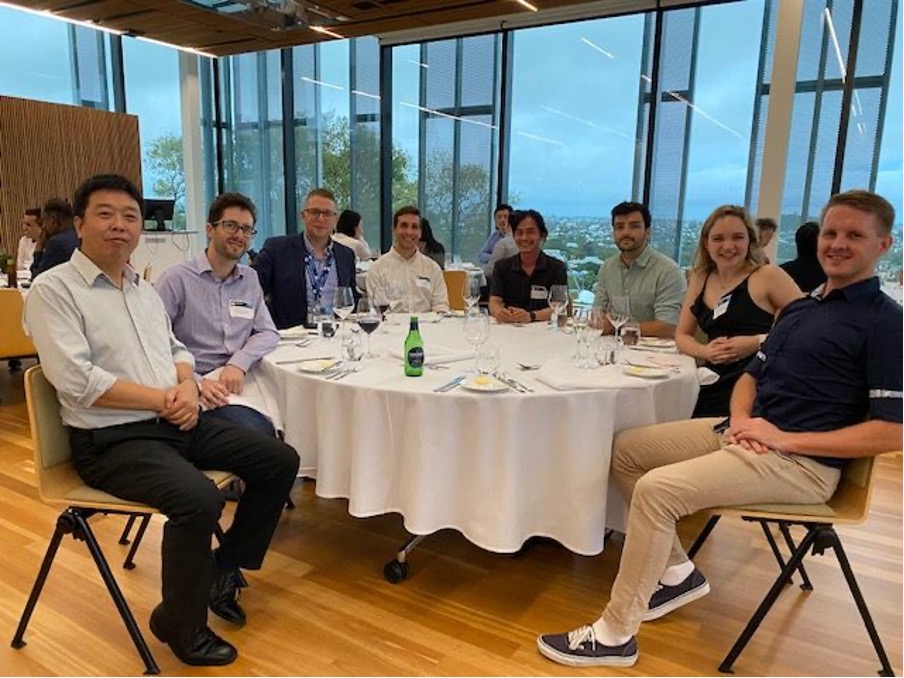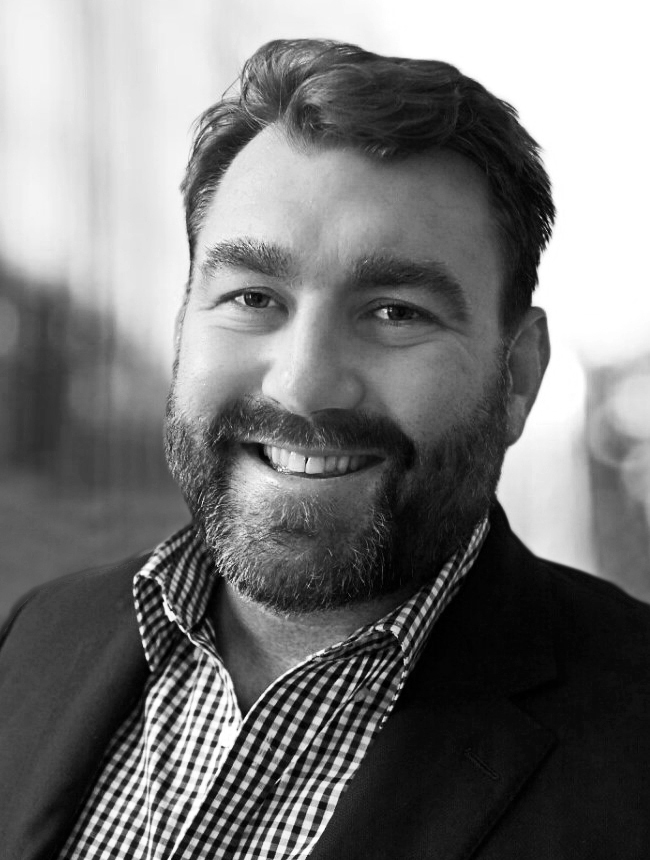
From March 31st – 3rd April, the team attended the biennial Shoulder & Elbow Society Australia conference in Sydney, Australia.
This was the first time that SESA opened the conference up to non-clinical researchers which was an amazing opportunity for our students Max Lavaill, Yilan Zhang, Hossein Ahmadi, and post-doc Wolbert van den Hoorn to network with industry and hear first-hand all the challenges facing shoulder surgeons.
Over the three days of the SESA conference, attendees had the chance to hear presentations from our Centre’s Network. It was wonderful to see our biomechanical studies on stage at a clinical meeting and to participate in the discussion.
The conference was a fantastic opportunity for our students to engage with our industry partners with Adj. Prof. Ashish Gupta from QUASR, Greenslopes Hospital and Akunah medical technologies presenting a workshop with industry partner Zimmer Biomet ANZ, Miss Marine Launay from Akunah presenting her talk on ‘The Anatomical Concave Surface Area (ACSA) Method for the true Glenoid Bone Loss Analysis.’
Adj. Prof. Gupta chaired the event and alongside our other key clinical partner, Dr Ken Cutbush, presented their experiences on ‘Revision RC Repair – SCR,’ shortly followed by an engaging talk by Adj. Prof. Gupta on ‘Arthroscopic Muscle Advancement and Slide Technique to Repair Massive Posterosuperior Rotator Cuff Tears: Technique and Clinical Outcomes.’
The team were given valuable insight into the biomechanical research currently shaping orthopaedic practice, with Adj. Prof. Gupta and Dr Brandon Ziegenfuss, a key centre affiliate researcher co-presenting their talk on ‘A Biomechanical Analysis of Various Shoulder Instability Fixation Constructs,’ shortly followed up by Miss Marine Launay’s talk on ‘Validation of Mixed Reality Technology as a Guidance System in Shoulder Arthroplasty,’ providing valuable insight into the new Hololens 2 technology and how Virtual Reality technology is transforming pre-operative planning and shoulder arthroplasty surgeries.
Centre PhD student Mr Max Lavaill also presented his e-poster on shoulder biomechanics and gained a valuable opportunity to network with our Sydney-based PhD students Miss Yilan Zhang and Mr Hossein Ahmadi for the first time.
Centre Post-docs Dr Wolbert van den Hoorn, Centre Deputy Director Prof. Peter Pivonka, and Akunah affiliate researchers Dr Kathir Azhagan Stalin, and Dr Jashint Maharaj further attended and made valuable contributions towards project planning with our industry partner Australian Biotechnologies and our key contact there, Mr Patrick May; and enjoyed a lively conference dinner held at Taronga Zoo as a spectacular and delicious close to the event.
With our centre growing, the conference marked a key opportunity to share our research with our Australian orthopaedic network and to ensure connectivity and collaboration between other researchers and surgeons in the field.
With further input by one of our Independent Advisory Board members, Prof David Sonnabend who is a Professor Emeritus at the University of Sydney and founding member of the Australian and New Zealand Orthopaedic Research Society, the future of the centre is bright with greater impact and spread of our research to those directly working in the orthopaedic industry.
Read below for our student’s experiences at the conference:

Hossein Ahmadi, PhD student
“I had a fantastic time at the Shoulder & Elbow Society Biennial meeting, the most relevant shoulder-focused clinical meeting in Australia. The conference was unique as it was rare that this clinically focused conference was open to non-clinical researchers. Engaging with clinicians, academics, and industry partners was incredible. The presentations and discussions were impressive, mainly covering the shoulder surgeons’ first-hand challenges to improve patient outcomes. I had exciting discussions with surgeons, industry partners, and some colleagues from QUT. The conference was also an excellent opportunity for me to better understand the gap between academia and clinical research. Finally, I would like to congrats the ARC Training Centre for Joint Biomechanics, QUASR, and akunah members for their solid efforts and incredible teamwork”

Yilan Zhang, PhD student
“Had an amazing experience to attend the Biennial Congress of the Shoulder and Elbow Society of Australia (SESA) in Sydney – first in-person conference post COVID! It was great to catch up with QLD colleagues from QUASR and ITTC team.
The four-day conference was packed full of inspirational and driven group of surgeons and engineers, discussing the current thinking, tech, and advancement in shoulders – not to mention all the lovely conversations had during lunch and conference dinner, and over coffee. I also appreciate the chance to talk with multiple amazing companies in industry (e.g., Stryker, Zimmer Biomet and Materialise).
It seems an obsession of trying to implement our research findings in clinical practice or commercialise research outputs without understanding the real obstacles and appeals of clinicians and industries. This meeting helps bridge the gap between research and practice. It makes me aware of the need for accurate and personalised computational modelling in pre-operative planning and post-operative care for shoulder surgeries, and how to make research outputs useable in practice settings.”

Max Lavaill, PhD student
“I was truly grateful being able to attend the Biennial Congress of the Shoulder and Elbow Society of Australia. Especially as it was the first congress where the society allowed academics and PhD students in. It is essential to reduce the gap between academic research and clinics.
I was personally amazed by the quality of the shoulder and elbow research happening in Australia. Particularly, I learnt a lot about clinical complications following a Latarjet procedure and reverse shoulder arthroplasties, and I leave this congress with new ideas on how computational modelling could be used to better understand what is actually happening after an operation and avoid these issues.
During my trip, I could liaise with surgeons and bring them closer to my poster to start fruitful conversations, talk with our industry partners (Zimmer Biomet and Materialise) and finally get to meet and laugh with other PhD students from the centre who are based in Sydney.
Last but not least, it’s wonderful to finally being able to travel interstate, enjoy the beautiful city of Sydney and do extra activities with colleagues.”

















